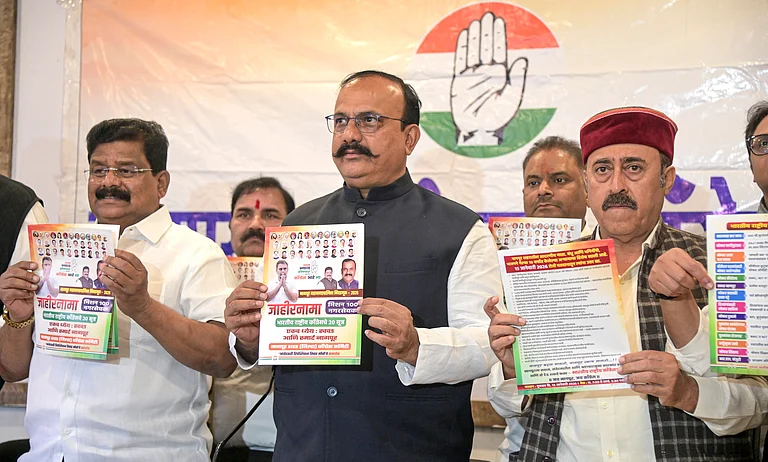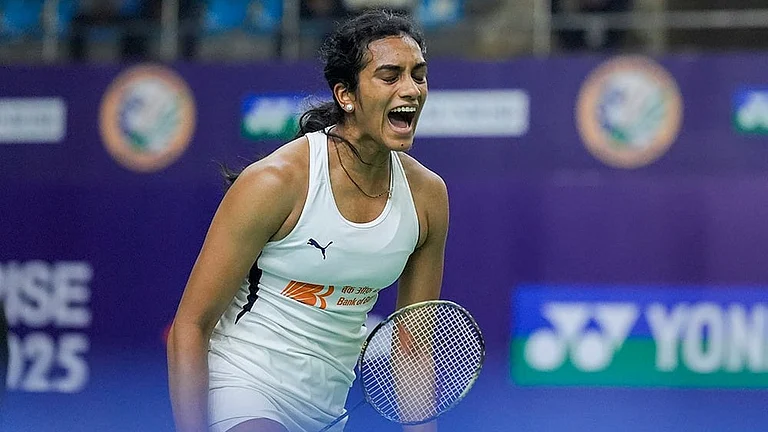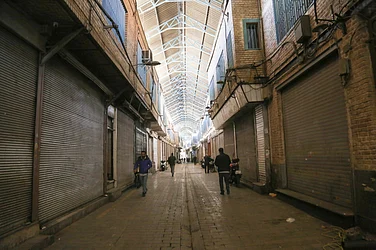In the first week of September, a joke did comedian Swati Sachdeva in. Responding to a fan’s Instagram comment about ‘reserving’ a seat at Sachdeva’s concert if she happened to perform at the Indian Institute of Technology (IIT) in Delhi, the comedian had quipped: “Quota wali aadatein gayi nahi tumhari” (You are not through with the quota-seeking habit yet).
Sachdeva received flak on social media for her now-deleted joke on reservations, especially because it came against the backdrop of the ongoing debate around caste discrimination leading to ‘institutional deaths’ in IITs and other premier education campuses in India.
On September 2, a Dalit student committed suicide inside the IIT Delhi campus. It was the second instance of an SC/ST student’s death by suicide on the same campus in two months, even as claims were made from some quarters that the victims’ caste identities were intrinsic to their respective suicides.
No wonder, Sachdeva’s seemingly innocuous joke led to outrage.
The two contrasting incidents, the suicides on one hand and Sachdeva’s controversial remark on the other, reveal the existing schism over reservation policies in Indian society. They also shed light on the challenging situations faced by the communities that are supposed to benefit from the reservation policy.
Affirmative Action: Why India Chose Reservations
India follows a policy of reservations for marginalised sections of the population based on the policy of affirmative action, as part of which, positive steps are adopted to increase the representation of minorities in areas of employment, education and cultural spaces from which they have been historically excluded. The principle of affirmative action has its roots in the West, especially in the United States of America, where the black and native populations had faced years of systematic discrimination and slavery.
India started testing the concept of affirmative action and protected electorates from the 19th century itself.
It was B R Ambedkar who raised the issue of reservations in the Constituent Assembly debates ahead of independence. In fact, Ambedkar’s ideology and his idea of political representation was initiated as far back as 1919. Ambedkar argued that equality alone was not enough to undo the historic injustice faced by marginalised sections. The state needed to provide equity.
“Caste is a birthmark that never fades,” says RJD MP Manoj Jha, adding that any safeguard for depressed sections of population needs special safeguards against caste discrimination.
“We have to look at the historical context of socio-economic inequality in India that has persisted for centuries due to various factors including caste-based discrimination and unequal access. This malaise, this disease, is over 2,000 years old and 70 years of affirmative action is not enough to reverse the injustice,” Jha states.
Stressing the importance of continuing affirmative action programmes, Jha says that while “we talk about a five trillion-dollar economy, our own people belonging to certain castes, are compelled to generationally clean our sewers”.
Those against reservation often argue that it is against the spirit of meritocracy as well as equality. However, coincidentally, Prime Minister Narendra Modi-led National Democratic Alliance government has been heaped with praise from several sections of society for passing the historic Women’s Reservation bill which mandates 33 per cent reservation for women in Parliament and state legislative assemblies.
Inclusion In Representation
It was only after the 73rd and 74th amendments, enacted during the PV Narasimha Rao government, that women were granted 33 per cent reservation in Panchayati Raj Institutions. MP Anupriya Patel, president of the BJP-ally Apna Dal (Soneylal), emphasises the importance of initiating such measures.
“It’s true that women who have made their way in politics through grassroots level have faced a lot of struggle. But 33 per cent reservations in Panchayati Raj Institutions made their entry into politics possible,” Patel states.
But the road since then has been arduous.
“Women still remain extremely underrepresented in the legislative bodies of our nation. Hence, the need for constitutional guarantees like the bill reserving 33 per cent seats for them in our legislatures,” she states.
In 1991, following the Mandal Commission’s recommendations, OBCs were also brought under the fold of reservation. The Women’s Reservation bill, which extends the reservation to seats reserved for SC/ST communities, does not include OBC reservations, leading to debates about the inclusivity of the bill.
According to Jha, the bill is not inclusive of social minorities. Anupriya Patel also agrees that the question of inclusion of OBCs was a significant one. Responding to the question of the OBC quota in the Women’s Representation bill, Patel states that “its importance can’t be overruled”.
“Women remain a heterogeneous group. They tend to differ on grounds of caste, religion, income levels, education and academic credentials and family environment in which they are raised. It’s important to ensure social diversity,” Patel states.
So, who gets to be a beneficiary of reservation policies? Jha cites the Constitution for an answer.
Article 15, Clause 4, and Article 16, Clause 4, clearly define the constitutional guidelines for determining who should or shouldn’t receive reservations, according to the DU professor. Jha emphasises that the government exceeded this mandate by introducing 10 per cent EWS reservation, which wasn’t constitutionally sanctioned.
Rights vs Merit
Congress leader and former Law Minister Veerappa Moily states that affirmative action is intrinsic to the eradication of poverty and social inequality.
“Social disparity based on caste, gender or religion is still the biggest challenge that we face toward the eradication of poverty. India is a signatory to the UN 2030 goals of poverty eradication. We cannot ensure it without providing equity and equality in access to all sections of the Indian population when it comes to sectors like healthcare, education, jobs and governance,” Moily states.
The criticism against affirmative action is usually rooted in the fact that positive discrimination is also based on the same criteria that cause a certain community’s marginalisation. In a 1979 book, Philosophical Perspectives on Affirmative Action Kenneth Simons argues that affirmative action, while not obligatory, can be a means to achieve societal goals. This approach raises concerns as it involves using racial criteria historically considered objectionable. Mahatma Gandhi shared similar objections to separate electorates for marginalised groups.
The second argument against preferential treatment even if it is for meeting social ends is unfair to merit. This argument reverberates through the anti-reservation narratives in India which state that not all Dalits benefitting from the reservation system are discriminated against and that not all upper castes are enjoying the benefits of caste system. Merit is also a consistent question in educational and academic spaces where general quota students/employees often denigrate those inducted via SC/ST reservations as ‘inferior’ in terms of intellectual quality or skills.
According to Moily, backwardness includes social and educational backwardness. Some castes can be considered more backward than others. Does that mean reservations should be removed? Instead, Moily stresses on the need for a caste census, a contentious topic facing the central government.
“Caste census is essential to gauge the ‘backwardness’ of each community. The last caste census was conducted in 1933 by the British. Thereafter, it was due in 1942. But at that time, because of the World War, the British postponed it. But after independence, it should have been continued,” Moily states.
He adds that there is no real data on who is “backward” with successive governments basing their policies on interpolations of the 1933 caste census.
Judith Jarvis Thomson addressed the merit-based critique of reservation in her work, ‘Preferential Hiring.’ She discusses programs that prioritise minorities or women over equally qualified white male applicants.
Simons points out that if there’s no inherent right to prefer based on qualifications and if merit-based selection enhances efficiency without fairness, then favouring a minority or female candidate over a better-qualified white male is no more unjust than choosing an equally qualified minority or female candidate.
The argument helps one understand the real question of the fairness of affirmative action programs instead of gauging them from the perspective of efficacy.


























